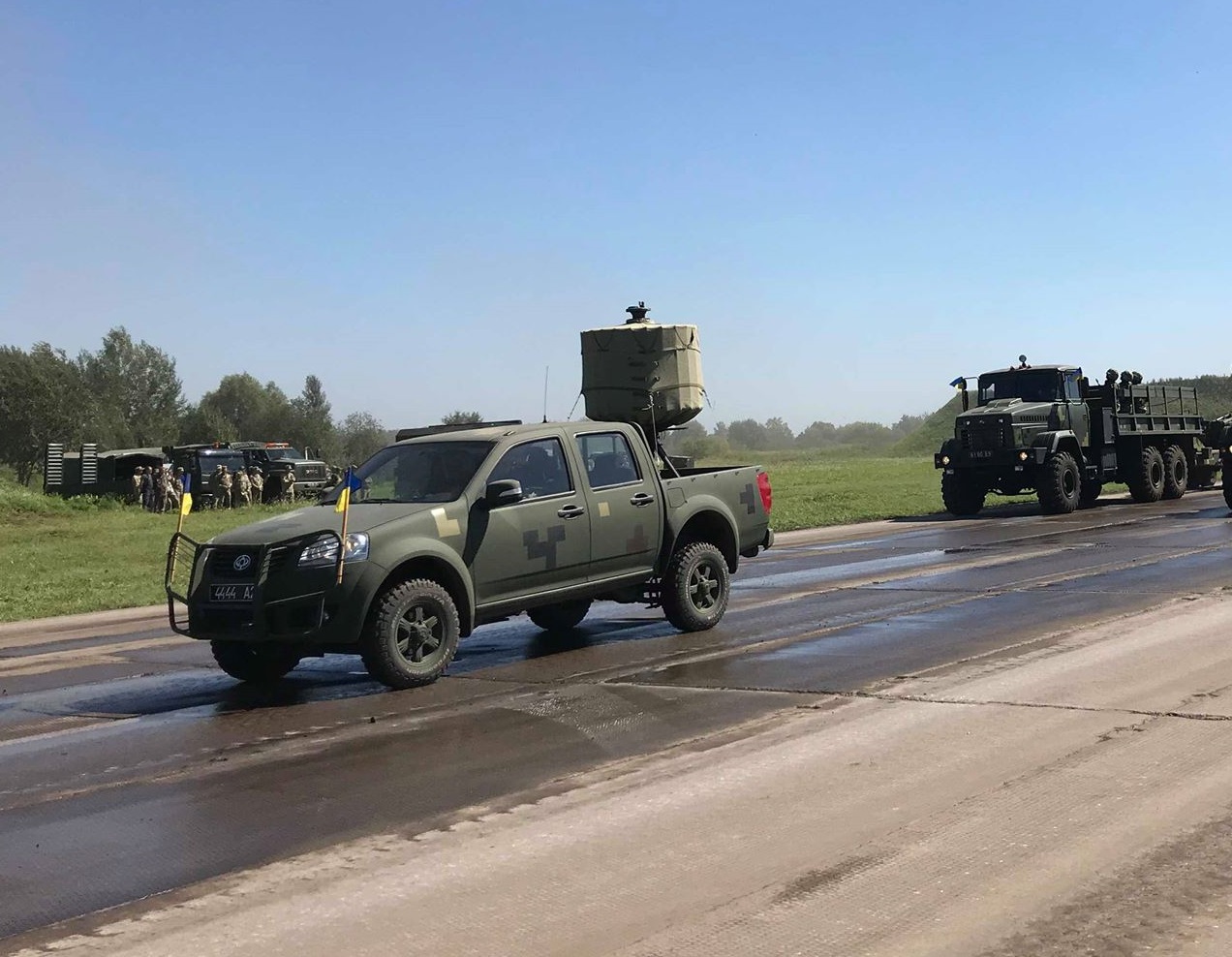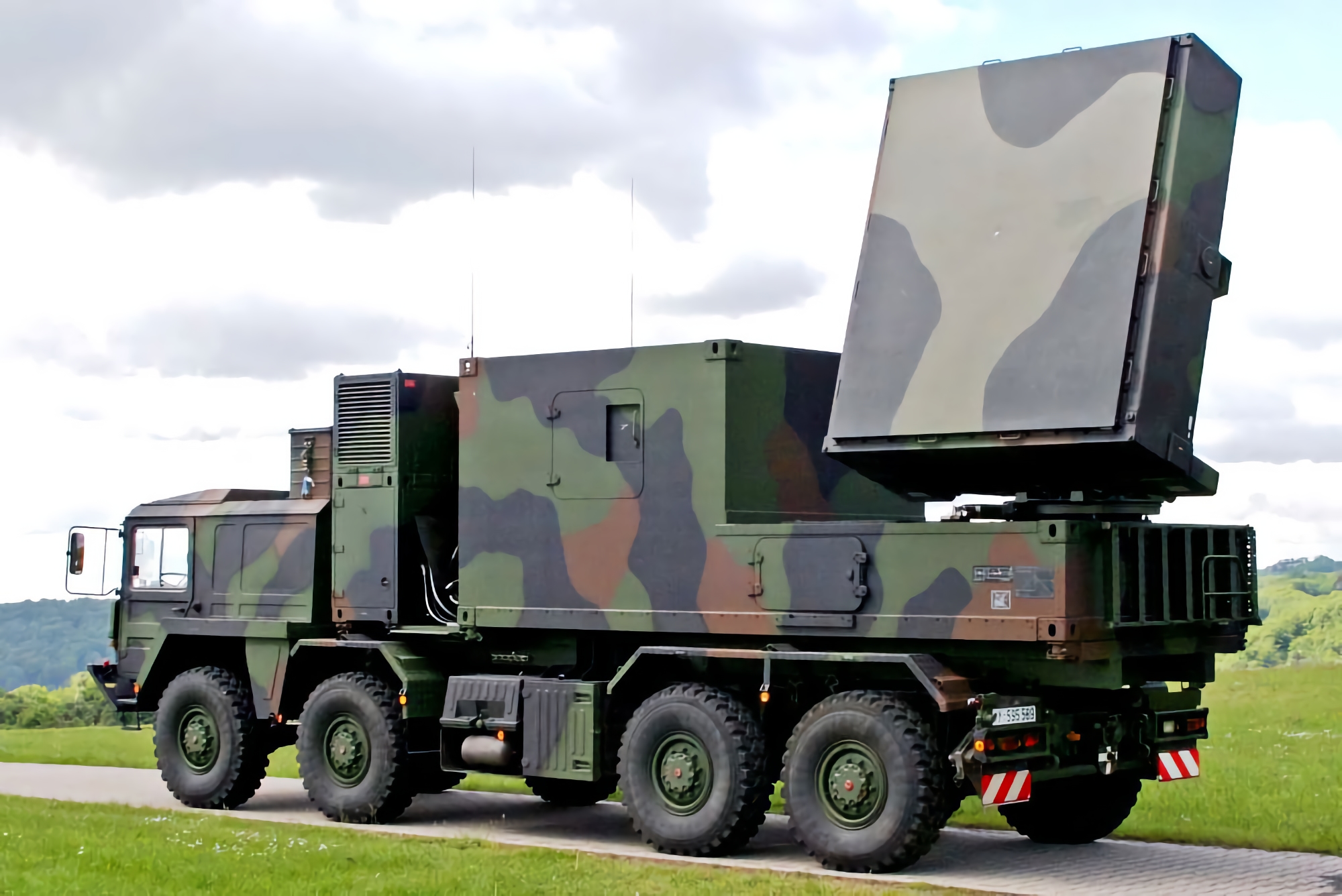Anti Artillery Radar - This article has many issues. Please discuss the improvement of this or these questions on the discussion page. (Learn how and how to remove these template messages)
This article contains a list of citations, but does not include sufficient inline citations. Please help improve this article by including more accurate citations. (February 2014) (Learn how and how to remove this template message)
Anti Artillery Radar

This article requires additional citation for approval. Please help improve this article by adding citations to reliable sources. Inappropriate content may be appealed and removed. Find sources: "Anti-Battery Radar" - News · JSTOR (May 2011) (Learn how and how to remove this template message)
Norway Orders Additional Counter Battery Radars
A counter-battery radar (alternatively weapon tracking radar or COBRA) is a radar system that detects artillery shells fired from one or more guns, howitzers, mortars, or rocket launchers and determines the position of the weapons on the terrain from its trajectory. they shot him.
Early anti-battery radars were used against mortars whose high trajectories were highly symmetrical, allowing easy estimation of the launcher's position. Beginning in the 1970s, digital computers with improved computing power also made determining long-range artillery trajectories more complex. Usually, these radars are attached to the frigate artillery units or their support units, which allows them to quickly organize counter-battery fire.
With the help of modern communication systems, information from a single radar can be quickly distributed over long distances. This allows the radar to alert multiple batteries as well as provide early warning of heavy targets.
Modern anti-battery radars can detect enemy batteries up to 50 kilometers (31 mi; 27 nm) away, depending on radar capabilities, terrain and weather. Some anti-battery radars can also be used to track heavy artillery fire and calculate corrections to adjust their fire to a specific position, but this is usually a secondary objective.
Us Handover Two Counter Battery Radars To Ukraine
Radar is the most accurate tool for identifying enemy artillery. The advent of indirect fire in the First World War saw the development of sound range, flash tracking and aerial reconnaissance, both visual and photographic. Radars require hostile weapons and the like, such as sound scatterers and flashing lights, before they can be deployed.
The first radars were developed before the Second World War for anti-aircraft purposes. Soon after there was a fire control radar for ships and coastal artillery batteries. The latter could see the splash of water from missing bullets and allowed corrections to be made. In general, the projectiles could not be observed directly with radar because they were too small and accurate, and they traveled too fast to produce strong returns for the mechanical antennas of the time to follow.
Radar operators in light anti-aircraft batteries near the front line found they could track mortar bombs. This was probably helped by the fins of the bomb, which was a semi-angled cube that strongly reflected the signal. These incidental intercepts led to their use in this role with specialized secondary instruments and the development of radars designed to locate mortars. Special mortar detection radars have been popular since the 1960s and were in use until 2000.

Mortars were relatively easy to deploy due to their height, arc and route. Sometimes, just after the shot and just before the impact, the trajectory is almost linear. If the radar detects the projectile at two points immediately after launch, the line between these points can be extended to the ground, providing a very accurate location of the mortar, which is not enough to easily hit the artillery anti-battery. Better radars were able to detect flares at high angles (greater than 45°), although such use was rare.
Us Delivers Two Q 36 Counter Battery Radar Systems To Ukraine
The low-angle trajectories normally used by guns, howitzers, and rockets were more difficult. Pure low-angle ballistic trajectories are uniform, relatively parabolic at the start of flight, and close to This is further modified by small effects such as wind, air pressure differences, and aerodynamic effects, which have time to have a significant effect on fire long range, but can be ignored for short range systems such as mortar. These effects are minimized immediately after takeoff, but the low angle makes it difficult to see rounds during this time, compared to a mine that leaves the sky almost immediately. Adding to the problem is that conventional artillery shells make difficult radar targets.
In the early 1970s, radar systems capable of detecting weapons became successful, and many European NATO members began a joint ZDA project. This was short-lived for unclear reasons, but the US launched the Firefinder program and Hughes Aircraft Company developed the necessary algorithms, although it took two or three years of hard work.
The next step forward was Europe, where in 1986 France, West Germany and Great Britain agreed on a "List of Military Requirements" for new anti-battery radars. The distinctive feature was that instead of placing individual guns, etc., the radar could have many at the same time and group them in batteries according to point of ctre, size and relationship to the long axis of the battery. This radar eventually entered service as AESA's Euro-ART COBRA (Battery Countermeasures Radar) system.
29 COBRA systems have been manufactured and distributed since August 2007 (12 resold to Germany - 2 to Turkey, 10 to France and 7 to the UK).
Detection And Tracking: Radar Stations In Special Operations
At the same time as the development of COBRA, Norway and Sweden developed a smaller mobile anti-battery radar called ARTHUR. It was put into use in 1999 and today it is used by 7 NATO countries and the Republic of South Korea. The new versions of ARTHUR are twice as accurate as the original.
Operations in Iraq and Afghanistan created a new need for a small anti-mortar radar for use in forward operating bases that provides 360° coverage and requires minimal manning. In another report on the next step, it is also possible to add anti-battery software to an airspace surveillance radar on the battlefield.
The basic technique is to track the projectile long enough to record a segment of the trajectory. This is usually done automatically, but some early and not so early radars required the operator to manually track the missile. Once a trajectory segment is captured, it can be processed to determine its point of origin on the ground. Before digital terrain databases, this involved manual iteration with a paper map to check the elevation of the coordinates, change the elevation of the site, and recalculate the coordinates until a satisfactory location was found.

Detecting the missile in flight in the first place was an additional problem. The cone beam of a conventional radar had to point in the right direction, but to have enough power and accuracy, the angle of the beam was usually limited to about 25°, making it the -difficult to find the projectile. One method was listing positions that told the radar operator roughly where to aim the beam; in some cases the radar was not activated until this point so that it would be less vulnerable to electronic countermeasures (ECM). However, conventional radar beams were not very effective.
Kurfs: Ku Band Radio Frequency System
Since the parabola is defined by only three points, tracing the long segment of the trajectory was not very efficient. The Royal Radar Foundation in Great Britain has developed a different approach to the Gray Archer system. Instead of a conical beam, a radar signal was produced in the form of fans with a width of about 40° and a height of 1°. Foster's scanner changed the signal so that it focused on a single horizontal position, scanning rapidly back and forth. This enabled him to comprehensively scan a small portion of the sky. The operator controlled the mortar bombs to pass through the piece and determined its range by timing the pulse, its horizontal position at the position of the Foster scanner at that moment, and its vertical position at the known angle of the thin beam. The operator moves the antenna to a second corner higher in the air and waits for the signal to arrive there. This produced two essential points that could be processed by an analog computer. A similar US system was the AN/MPQ-4, although this was a slightly later design and therefore less automated.
However, when phased array radars became available suitable for field use and with digital computing power, they offered a better solution. A phased array radar has multiple transmitter/receiver modules that use differential tuning to rapidly scan an arc up to 90° without moving the antenna. They can detect and track anything in their field of vision, provided they have enough computing power. They can filter out targets they are not interested in (eg aircraft) and track the remaining useful based on their capabilities.
Anti-battery radars were predominantly X-band, as this offered the highest accuracy for small radar targets. However, C-band and S-band are common in radars manufactured today. The Ku group was also there
Anti aircraft artillery, counter artillery radar, anti tank artillery, best anti radar detector, modern anti aircraft artillery, anti artillery gun, anti aircraft artillery wwii, artillery radar, artillery locating radar, anti drone radar, field artillery radar operator, anti air artillery
0 Comments